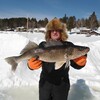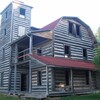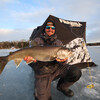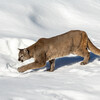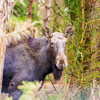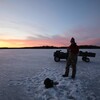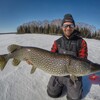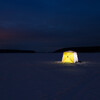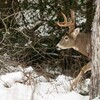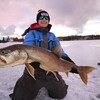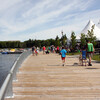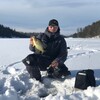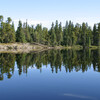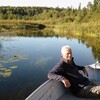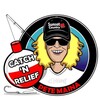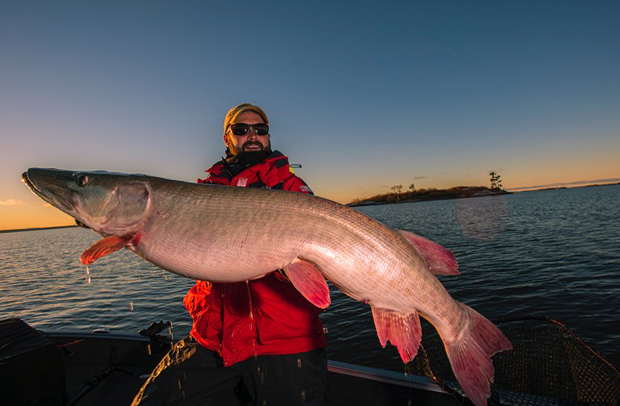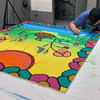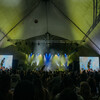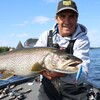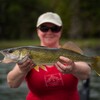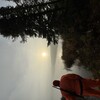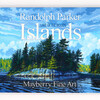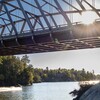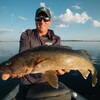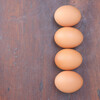
Targeting Early Season Muskies in Sunset Country

The third Saturday in June marks the opening of muskie season in Ontario’s Sunset Country. This timeframe was chosen to protect the muskie from direct fishing pressure prior to and during spawning to maximize natural reproduction. The early season then, being post-spawn means it is best to target lake sections with the most suitable spawning water—shallower, soft-bottom vegetated zones. This typically means bays, inlets, and simply the largest areas of shallow water where weeds show up first.
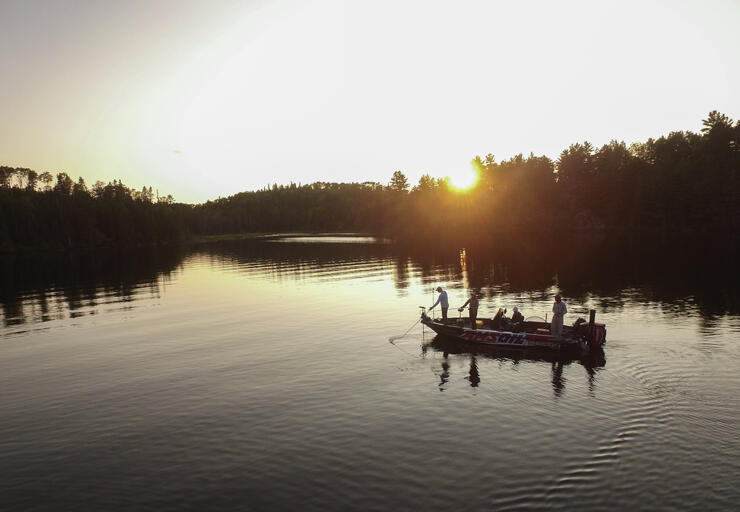
Once spawning is complete, muskies will start moving toward their preferred summer zones. But considering how expansive shield lakes are, and that in many cases there are huge sections of water that are deeper with no soft bottom vegetation anywhere, these spawning-friendly lake sections will maintain a significantly higher density of muskies per acre for several weeks after the spawn. When looking at a map these zones with a majority of water 8 feet and less really stand out—and it’s definitely the place to start. Fish the vegetation and any edges of it, including shallower edges where weeds may break to sand or a different weed type.
While new vegetation is always a key element early season, all structures and travel zones need to be considered, keeping in mind that fish are moving and patterns can quickly change. Any nearby reefs, points, or shallow shoreline extensions should be checked; essentially any shoreline leading out of a spawning zone will hold fish. Concentrate too, on any narrow channels or neckdown areas out to main-lake sections to be key as well. In many cases, there will be current flowing through and/or wind-induced current. Any obvious current breaks (eddies) should be fished and this definitely includes fallen trees; submerged, older trees are generally the best, but any wood is worth targeting.
Patterning is extremely important for any species and situation, but when it comes to spring muskies on shield lakes, the locational patterning of active muskies is the most important factor. It’s not that all muskies will be in the same structure and depth zone, but it’s very common for the catchable (active) fish to be on a very specific pattern while fish in other zones are very negative. Technology is amazing these days, as we have amazingly detailed contour charts as well as down and side imaging, literally allowing us to find, see, and identify fish species all around us. It’s amazing and can be extremely helpful (arguably cheating)—yet it can actually work against anglers by somewhat thwarting the patterning process. The tech can see fish but it can’t make them eat. Many folks are prone to spending too much time where they have seen multiple fish—waiting for them to bite … but big predators can remain inactive for days.
If there’s a negative to shield lakes it’s that they are generally big and it all looks really good, so really pay attention to where active fish are located and fish other zones that provide the same conditions. It may be weeds within a spawning bay, a submerged rock reef in a channel, points, or trees in current … when you find an active fish, reproduce that situation as much as possible with regard to depth, structure, current, wind-on, or lee side … and always take note of specific weed types fish came from. In most cases, active fish locations will be specific on a given day.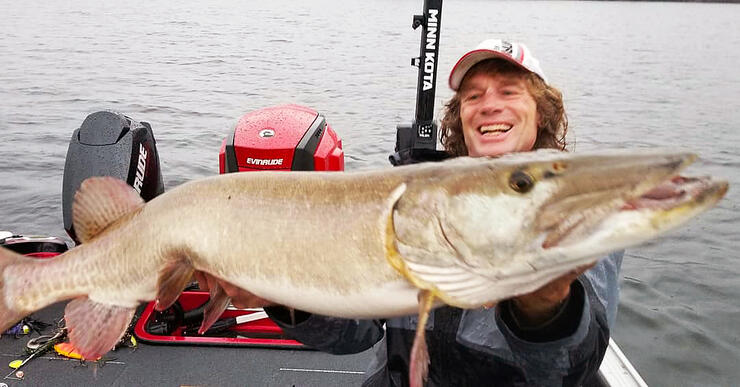
Two early-season options that get little attention are concentrating very shallow and searching for deeper water, and suspended fish. It can be very easy to get caught up fishing more classic structures like points, weeds and reefs while ignoring simple tight casting to shorelines and fishing tight in bays or little pockets on a shoreline. Early season muskie will often park in water literally just deep enough to float them, and when they do—they will generally be willing to attack anything that gets close. In many cases, it requires throwing up into emergent vegetation with topwater or some type of weedless presentation. I have relearned the lesson many times having watched casts that are 10 feet away from shore or close on a structure edge—be ignored—yet a bait that lands tight results in an explosion. Always try tight and very heavy cover where available.
Muskies also live in open water feeding on a wide variety of forage all over the muskie range; in early muskie season, they are in the upper range of the water column in the warmer zone. Suspended muskies exist all over their range, but they are least fished for on shield lakes with all of the beautiful shallow structures to cast. There are times these open water fish can be active when the others aren’t. The most effective way to start checking the pattern is by trolling channels where they exist and any deep-water zones adjacent to the spawning areas. Concentrate lures in the top 10 feet of the water column and cover some water. Be certain to save the location of any strikes visually or via waypoint—as to be able to reproduce the trolling pass, or come back with casting presentations - as where there is one predator there are generally more. It is actually common to catch multiple fish in one small area after miles of fruitless trolling.

The best presentations are often somewhat lake specific, but a good general rule for early season is smaller baits overall, with a focus on cranks, jerks, spinners, and topwater. Many anglers prefer to wait until summer warmth hits to try topwater, but especially on steady or pre-frontal weather, including the open water trolling, give them a try. Twitched cranks and jerk baits are probably the most consistent choices, chosen for the situation (i.e. shallow-running, buoyant baits for those zones); always be aware to incorporate a few extended pauses into retrieves and be aware to watch for a pattern of strikes coming on pauses.
There is no lure type more efficient for water coverage and hooking/holding than spinners; be it in-line or overhead design. And, when it comes to fishing that very thick vegetation a single-hook spinnerbait and buzzers are a great option. It is important to be aware that shield muskies are very susceptible to boat side strikes on a figure eight or circle maneuver – and spinners are definitely the most efficient … there is something about those vibrating blades going in circles that drives ‘em nuts. If muskies are chasing on spinners it is silly to switch; keep using that most efficient lure until the pattern changes.
There are many soft plastic options and jigs that can be tried as well, though generally, I will try covering water in multiple structural and depth options before really slowing down and going the finesse route. However, with few exceptions—abnormal cold or heat in the early season will be a tough bite, and in those conditions, I would prioritize in-your-face plastics and more extended pauses with cranks and jerks. While muskies can never be relied on for consistency—nor inflated egos from catches guaranteed—Sunset Country being the most beautiful and structurally-intriguing backdrop available to fish muskies is consistent.
Recommended Articles

Is the 1,400 Kilometre Drive to Northwest Ontario For a Fishing Trip Worth it?
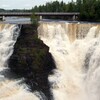
8 must-see waterfalls

6 Ways to Get Your 10,000 Steps This Fall

Top 5 Reasons You Should Be Fishing in Morson, Ontario

Discover The Winnipeg River

Enjoy Sunset Country's Fall Colours on Your Next Road Trip

Fishing in the Fall?

6 Reasons to Book a Fall Vacation to Sunset Country

10 Reasons to Avoid Ontario’s Sunset Country

Heading Across Canada?

A Guide to Sunset Country Museums
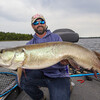
The Promised Land: Best Muskie Fishing in Ontario

Fall Fishing Tips
5 Essential Boreal Experiences in Ontario's Sunset Country

5 Obscure Facts About Northwestern Ontario: Were You Aware of These?
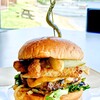
Great Food in Relatively Unknown Places
Outdoor Medicine

A Guide to Bringing Your Pets on Vacation to Canada

There's more than just fishing in the Red Lake Region

5 Amazing Sights You Can Only See By Boat

Going Fishing in Canada?

Going fishing in Ontario?

Outdoor Adventure in Ontario's Northern Paradise
Planning A Family Fishing Trip to Canada

Tips from a Fishing Legend

